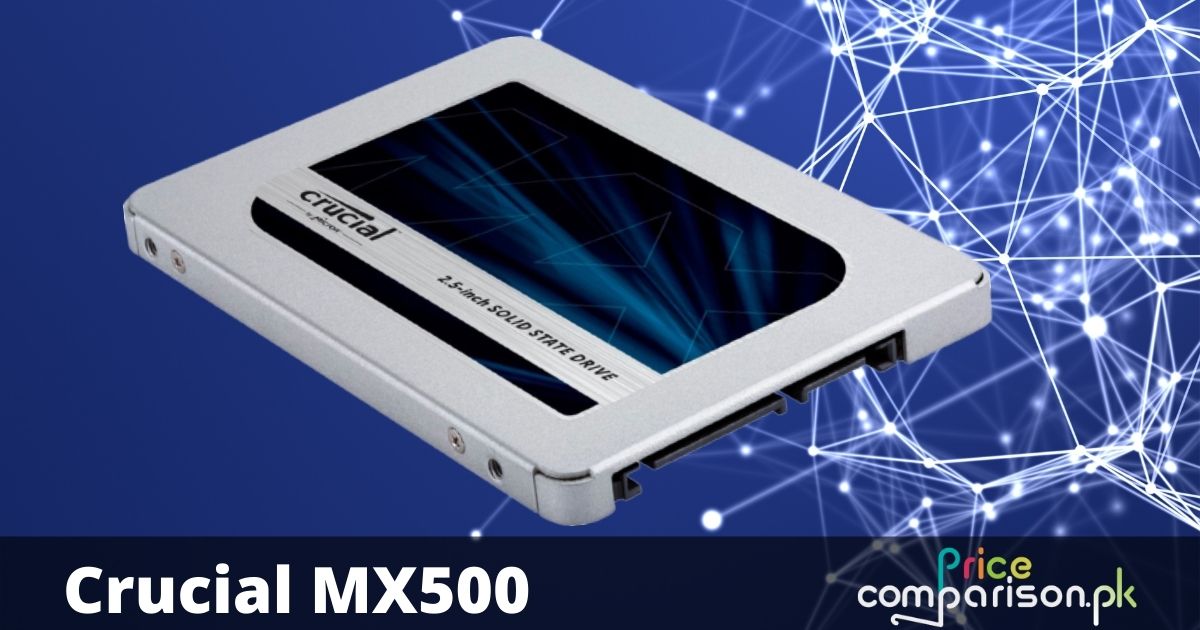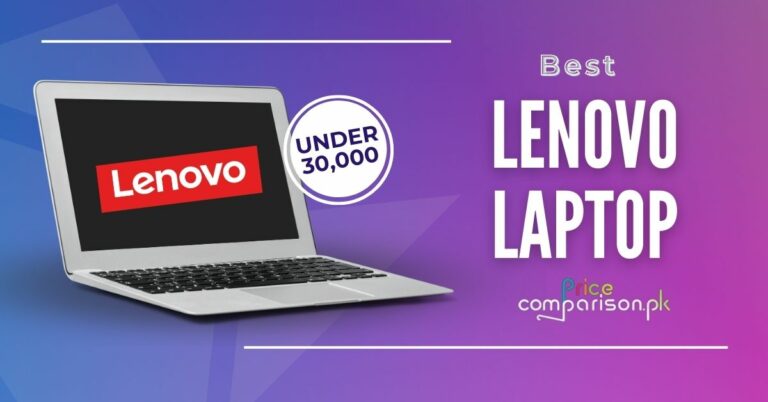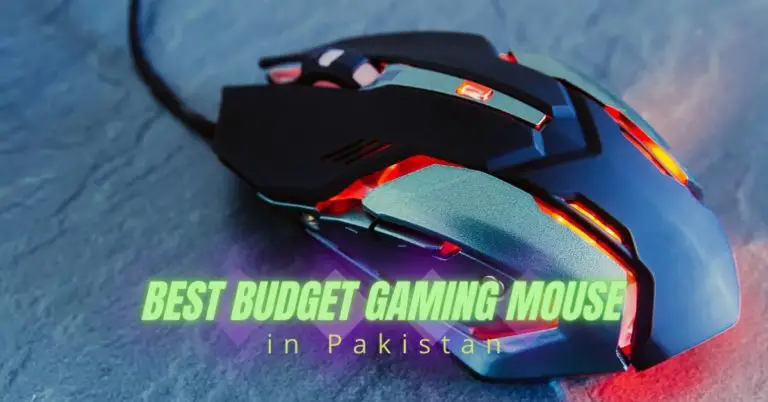Best Budget SSD For Better PC Performance in Pakistan 2023
It’s possible that the hard drive on your smartphone is completely filled and has run out of space. Best Budget SSD For Better PC Performance The only answer is to upgrade to a solid-state drive (SSD).
In the event that you do not require a large amount of storage, an inexpensive SSD may be sufficient for your needs. They are the key to getting your computer up and running in a blink of an eye.
[su_highlight background=”#DBFF99″]Many benefits can be gained by investing in a budget solid-state drive (SSD) while working. It contributes to the improvement of PC performance as well as the quickest possible boot-up time.[/su_highlight]
An SSD, in addition to your standard hard drive, will aid you in achieving outstanding results. In addition to internal storage, similar devices can be used for external storage.
There are hundreds of SSD cards available, and all of them have a modest starting point price. To bud assist you in your endeavor, we have compiled a list of the five finest SSD cards currently available, which may be found below.
List Of Best Budget SSD For Better PC Performance

Here is a list of Best budget SSD
[su_note note_color=”#d9e4e0″]
- PNY CS900 240GB 3D NAND
- Kingston 240GB A400 SATA 3 2.5”
- Samsung 970 EVO Plus SSD 250GB
- Inland Professional 120GB SSD 3D
- LEXAR NS100 2.5inch SATA III 128GB SSD
[/su_note]
[su_note note_color=”#ffffff”]Now Let’s Start to Learn About More it in Detail…[/su_note]
PNY CS900 240GB 3D NAND

PNY CS900 240GB 3D is an excellent choice when it comes to performance, and its speed is unrivaled in its class.
This device has a super-fast operating system boot time, which makes the setup extremely dependable.
When it comes to gaming, the ability to have a read speed of 535 Mbps appears to be a fantastic option to have available. Even during peak demand, it helps to reduce lag time.
Key Features
[su_note note_color=”#E2F0FC”]
- 4TB with enhanced reliability
- 75M hours meantime
- WD F.I.T. Lab certification[/su_note]
Kingston 240GB A400 SATA 3 2.5”

The Kingston 240GB A400 SATA 3 2.5″ is an excellent option if you are seeking a low-cost storage solution. It has a form factor of 2.5 inches, which should be plenty for any motherboard of your choice.
Because of its rapid file transmission speed, it is more dependable than any other hard disc now in use.
There’s no doubt about it: the Kingston 240GB A400 SATA 3 2.5″ is an excellent purchase.
Key Features
[su_note note_color=”#E2F0FC”]
- Starts up in a flash.
- There are several capacities available, as well as room for applications.
- Backward compatibility with the SATA interface.[/su_note]
Samsung 970 EVO Plus SSD 250GB

The Samsung 970 EVO Plus SSD 250GB has a sequential read speed of approximately 3500 Mbps. Games will run smoothly with no lag thanks to the blazingly fast processors.
The product has a Random Read IOPS of up to 600,000 IOPS, making it compatible with any mid-range SSD on the market.
Key Features
[su_note note_color=”#E2F0FC”]
- Improved bandwidth
- Samsung Magician Software
- 5-year limited guarantee[/su_note]
Inland Professional 120GB SSD 3D

For personal use, the Inland Professional 120GB SSD 3D has a straightforward capacity of 120 Gb, which is more than sufficient.
If you intend to use this gadget just for gaming purposes, it would be an excellent choice to keep on hand—the reason most people prefer it is because it does not overheat.
Key Features
[su_note note_color=”#E2F0FC”]
- Improved bandwidth
- Samsung Magician Software
- 5-year limited guarantee
[/su_note]
LEXAR NS100 2.5inch SATA III 128GB SSD
There are hundreds of SSD cards available, and all of them have a modest starting point price.
To bud assist you in your endeavor, we have compiled a list of the five finest SSD cards currently available, which may be found below.
Key Features
[su_note note_color=”#E2F0FC”]
- Improved bandwidth
- Samsung Magician Software
- 5-year limited guarantee
[/su_note]
[su_note note_color=”#f7fafe”]Your future Gaming PC must be equipped with the best Graphics cards and the best CPU for gaming that are within your Price Range.
That’s why we looked for systems that provide the best frame rate per-dollar value at various resolutions, including 1080p, 1440p, and 4K.
Everything from inexpensive to high-end can be found on this list, so there’s something for everyone.[/su_note]
Budget SSDs for Better Gaming Experience
The greatest gaming SSD is more important than you might imagine. In addition to ensuring that your games load quickly, SSDs will also improve the overall performance of your operating system.
Games will be able to take advantage of the DirectStorage API(opens in a new tab) now that Microsoft has made it available for Windows.
SSDs outperform traditional spinning hard drives by a wide margin; this is also true of SATA drives and the fastest PCIe 4.0 SSDs (opens in new tab).
There’s no turning back once you see titles like Skyrim or Red Dead Redemption 2 load in seconds rather than minutes.
Everything on this page has been thoroughly tested. In order to identify the best SSD for gaming, real-world game loading testing and synthetic speed tests are combined.
For testing purposes, we’ve installed Windows 11 on each SSD as the primary drive.
We only recommend 1TB and 500GB SSD drives because anything smaller, no matter how cheap it may be, has a noticeable performance penalty.
When it comes to gaming, a 250GB SSD will fill up considerably faster than you expect. Unless you can find a good 2TB or 4TB SSD for a good price, going larger is out of the question.
List of Best Budget SSD Hard Drives
Here is a list of Best Budget SSD For Better PC Performance.
- WD Black SN850
- Crucial P5 Plus
- Seagate Firecuda 530
- Samsung 970 EVO Plus
- Crucial MX500
- Kingston Fury Renegade
So let’s start with the details…
WD Black SN850

SPECIFICATIONS
- [su_note note_color=”#F3F3F3″] Capacity: 500GB, 1TB, 2TB[/su_note]
- Controller: WD_Black G2
- [su_note note_color=”#F3F3F3″] Memory: BiCS4 96-layer TLC[/su_note]
- Interface: PCIe Gen4 x4
- [su_note note_color=”#F3F3F3″] Seq. read: 7,000MB/s[/su_note]
- Seq write: 5,300MB/s
Late to the PCIe 4.0 party, Western Digital’s Black SN850 makes its appearance. It has a sequential transfer rate of 7,000MB/s reads and 5,300MB/s writes, which is significantly faster than most drives.
The PCIe 4.0 interface, which provides twice the possible bandwidth of PCIe 3.0 drives, is the reason. Ultimately, performance is what sets one SSD apart from another, and the WD SN850 certainly does that.
At 6,750MB/s and 5,920MB/s sequential read speeds, the synthetic benchmarks from ATTO and AS SSD demonstrate that this is a second-generation PCIe 4.0 drive.
Sabrent Rocket 4 Plus(opens in new tab) has faster read speeds, whereas the Sabrent Rocket 4 has slower writes.
When it comes to writing little amounts of data, the AS SSD manages to turn this around and outpace the Sabrent drive.
The SN850 is the most impressive of the current PCIe 4.0 drives on the market, with excellent real-world performance.
But it does run a little hot. In terms of next-generation performance, this is the quickest drive you can get, and it’s also the cheapest.
Crucial P5 Plus

SPECIFICATIONS
- [su_note note_color=”#F3F3F3″] Capacity: 250GB, 500GB, 1TB, 2TB[/su_note]
- Controller: Crucial PCIe 4.0 Gen
- [su_note note_color=”#F3F3F3″] Memory: Micron 176-layer TLC flash[/su_note]
- Interface: M.2 PCIe 4.0 x4
- [su_note note_color=”#F3F3F3″] Seq.read: 6,600MB/s[/su_note]
- Seq. write: 5,000MB/s
Crucial, one of the most well-known names in affordable solid-state storage has been unusually delayed in bringing us a new PCIe 4.0-compliant SSD.
The new P5 Plus is a wonderful entry-level Gen4 SSD, so the wait was well worth it. If you’re looking for the best price/performance ratio, the WD or Sabrent competition isn’t going to cut it.
Furthermore, it can easily outperform any PCIe 3.0 drive that you can name, and at a fraction of the cost. A PCIe 3.0 or earlier arrangement will still support this, but it will be limited by the bandwidth of that connection.
It’s been a long time since the first Gen4 SSDs were released, and the P5 Plus has lowered the barrier to entry significantly. In order to keep costs low while increasing performance.
Crucial has turned to Micron’s newest NAND flash memory and its own in-house controller.
When compared to prior drives, this one’s peak and random performance may be a tad disappointing, but it still rocks TLC memory rather than QLC, and it’s incredibly fast for the price.
Seagate Firecuda 530

SPECIFICATIONS
- [su_note note_color=”#F3F3F3″] Capacity: 500GB, 1TB, 2TB[/su_note]
- Controller: WD_Black G2
- [su_note note_color=”#F3F3F3″] Memory: BiCS4 96-layer TLC[/su_note]
- Interface: PCIe Gen4 x4
- [su_note note_color=”#F3F3F3″] Seq.read: 7,000MB/s [/su_note]
- Seqwrite: 5,300MB/s
Seagate’s Firecuda 530 has come with a bang, despite the company’s tardiness in entering the solid-state market and more specifically PCIe 4.0.
The latest Seagate drive, whether or not it has a heatsink (which is required for PlayStation 5 compatibility) is a stunner.
The rated sequential read/write speeds are excellent, but it’s the endurance levels that truly stand out compared to the competitors.
In terms of durability, the 2TB drive we tested has a staggering 2,550 TBW rating, which is unheard of outside of SSDs designed for the Chia gold mining industry.
Micron 176-layer TLC NAND and a Phison PS5018-E18 controller are used in the new P5 Plus drives from Crucial to excellent effect.
176L TLC NAND, according to Micron, has a 30% lower chip size and a 35% reduction in reading and writing latency over 96L NAND, the company’s previous iteration.
While the FireCuda 530 isn’t as fast as the industry’s top storage devices, it does have a leading sequential performance and endurance rating, making it at least as good as any consumer SSD now on the market.
Samsung 970 EVO Plus

SPECIFICATIONS
- [su_note note_color=”#F3F3F3″] Capacity: 250GB, 500GB, 1TB, 2TB[/su_note]
- Controller: Samsung Phoenix
- [su_note note_color=”#F3F3F3″] Memory: Samsung 3-bit MLC [/su_note]
- Interface: M.2 PCIe 3.0 x4
- [su_note note_color=”#F3F3F3″] Seq.read: 3,500MB/s [/su_note]
- Seq.write: 3,200MB/s
Only slightly faster than the Samsung 970 EVO, the Samsung 970 EVO Plus has the same price tag.
Although there was a time when the non-Plus version was less expensive, such drives appear to have vanished. If you can locate a pure 970 EVO for less, that’s a better deal, but those cars are hard to come by nowadays.
Real-world performance is superior to that of this generation’s competitors since both drives employ the same Samsung Phoenix controller.
When it comes to PCIe 3.0 performance, Samsung drives are the best, but you have to pay for that speed bump. In real-world testing, the Samsung performed somewhat better than the 512GB Add link, but it costs an additional $20.
For now, it’s not a deal-breaker, but when the 1TB model costs around $110, the 970 EVO drives with larger capacities become more difficult to suggest.
In spite of the lower price, the 500GB 970 EVO is still a fantastic drive because of its excellent build quality and well-thought-out specifications.
Crucial MX500

SPECIFICATIONS
- [su_note note_color=”#F3F3F3″] Capacity: 250GB, 500GB, 1TB, 2TB [/su_note]
- Controller: Silicon Motion SM2258
- [su_note note_color=”#F3F3F3″] Memory: Micron TLC [/su_note]
- Interface: SATA 6Gbps
- [su_note note_color=”#F3F3F3″] Seq. read: 560MB/s[/su_note]
- Seq. write: 510MB/s
There is only one SATA drive remaining on our list of the Best Budget SSD For Better PC, but the price difference between PCIe and SATA is so minor.
It’s difficult to make an argument for the significantly slower technology. Due to the strict limit on M.2 slots on a motherboard, SATA SSDs remain a viable secondary storage option.
And the Crucial MX500 is one of the most impressive.
With a maximum theoretical bandwidth of 600MB/s, SATA is virtually as fast as you can get, and Crucial’s drives have long been among the best value options available.
Your Steam and Epic collections will love having a second home on this low-cost 1TB SATA SSD.
It can be used as a boot drive on systems with no M.2 sockets, or at least no bootable M.2 sockets at all, and it will do so gladly.
If NVMe isn’t an option for your operating system, this disc will do the trick.
Kingston Fury Renegade

SPECIFICATIONS
- [su_note note_color=”#F3F3F3″] Capacity: 500GB, 1TB, 2TB, 4TB[/su_note]
- Controller: Phison PS5018-E18
- [su_note note_color=”#F3F3F3″] Flash: Micron 176-Layer 3D TLC[/su_note]
- Interface: M.2 PCIe 4.0 x4
- [su_note note_color=”#F3F3F3″] Seq. read: 7,300MB/s[/su_note]
- Seq. write: 7,000MB/s
One could easily dismiss the Kingston Fury Renegade SSD as just another Phison E18-based drive with an even more ridiculous moniker, but doing so would mean losing out on one of the most powerful PCIe 4.0 SSDs available.
The Renegade is a machine that produces a lot of numbers. It also operates at a low temperature, has good-rated write endurance, and comes with a long warranty. However, all of this wonderfulness comes at a steep cost.
Phison’s PS5018-E18 is an eight-channel controller that was designed and manufactured on none other than TSMC’s 12nm manufacturing technology.
It is equipped with a total of five CPU cores, three of which are based on generic ARM Cortex R5 IP and two of which are unique Phison designs. Phison says that the E18 can achieve read and write rates of 7.4GB/s and 7GB/s, respectively, as well as one million IOPS.
The E18 has traditionally been classified as an NVMe 1.4 chip, however, Kingston claims that the Fury Renegade is capable of supporting NVMe 2.0 speeds.
According to our research, Kingston is employing the same Micron 176-Layer 3D TLC chips seen in its KC3000 sister drive. All of this indicates that you’re looking at a drive that is completely up to date.
With the introduction of Intel’s Alder Lake processors, it is clear that the PCIe 5.0 standard is theoretically upon us.
However, we are still a long way away from PCIe 5.0 drives and systems becoming commonplace, as well as from PCIe 5.0 compatible SSDs becoming widely available.
It is unlikely that you would be able to distinguish it from the rest of the high-performance PCIe Gen 4 products based on your subjective computing experience alone. This means that the overall product and pricing are the most important differentiators.
We have high confidence in this drive’s long-term durability because of its low operating temperatures and exceptional write endurance rating.
The 5 Best Benefits of SSDs over Conventional Hard Drives
Solid State Drives (SSDs) are becoming increasingly popular for usage in laptops, desktop computers, and servers, and there is no doubt about it.
You may increase the performance of an old desktop PC or laptop by switching from a hard disc drive (HDD) to a solid-state drive (SSD). SSDs are also a good choice for new PC builds, servers, and system builders because of their speed and durability.
An SSD is a storage media that, in contrast to a hard disc drive (HDD), stores and accesses data using nonvolatile (flash) memory. In other words, there are no mechanical parts that can be moved, and this makes a significant impact.
These are just a handful of the numerous advantages that solid-state drives (SSDs) have over traditional spinning disc hard drives.
SSDs, among other things, can significantly improve the performance of your system with a relatively easy upgrade.
Here are five advantages to upgrading your computer’s hard drive to a solid-state drive.
Durability and reliability of a Solid State Drives
Heat is a key cause of hard drive failure, and the heat generated by the continuous motion of an HDD’s moving parts is sufficient to cause it to fail over a period of time.
Because an SSD does not contain such components, it may operate at a lower temperature while maintaining significantly faster performance.
An SSD is also better designed to withstand spills, vibrations, shocks, and general wear and tear, making it less likely that data will be lost during these events.
SSDs are significantly faster than hard drives
SSDs can be up to a hundred times faster than hard disc drives (HDDs). SSDs allow you to boot your computer faster, transfer data more quickly, and transmit data at a higher rate than traditional hard drives.
SSDs with faster read and write rates can handle data at the ultra-speed required in today’s corporate world, particularly when running programs that access massive volumes of data, such as an operating system.
Additionally, SSDs are extremely stable, ensuring that the data saved is safe.
Hard drives (HDDs) were only able to attain write speeds of 50-120 MB/s when using SATA SSDs. SSDs, on the other hand, can saturate the SATA bus at a rate of 550 MB/s.
It is normal to witness an overall system performance boost of 10-15 times when SATA-based SSDs are used in place of older hard disc drive technology, despite the restrictions of the SATA bus.
In contrast to the SATA bus, NVMe technology makes use of the PCIe bus, which allows storage devices to take advantage of the vast bandwidth potential available on the PCIe bus.
PCIe 4.0 (the current version) has up to 32 lanes and can theoretically transfer data at speeds of up to 64,000MB/s, which is far faster than the 600MB/s specification limit of SATA III.
Efficient Use of Power and Energy
Because an SSD does not contain any moving elements, it consumes less power than a hard disc drive (HDD) that contains a magnetic spinning disc.
When it comes to PCs and mobile devices, the energy economy is a significant advantage of employing an SSD, especially in cases where battery longevity is a highly marketable and requested characteristic.
Less weight and no noise is produced.
SSDs, because of their compact size, weigh less than larger hard disc drives (HDDs), which have magnetic heads and metallic discs.
SSDs are particularly well suited for use in laptops, tablets, and other small electronic devices because of their compact form.
SSDs are also far quieter than hard disc drives (HDDs), which may generate a lot of noise and vibrations that can be quite distracting.
Sizes and Form factors that are more practical
Since their introduction, hard disc drives (HDDs) have been constrained by their bigger storage capacities.
SSDs, on the other hand, are available in a number of sizes, ranging from the smallest, which is the size of a stick of gum, to the largest, which is 2.5 inches “This is a form factor.
The following are the most often seen SSD form factors:
2.5 gallons “The most common form factor is also the most economical in terms of cost per GB. M.2 is a bare circuit board;
it is available in both SATA and PCIe NVMe; it has a small form factor; it is about the size of a stick of gum; it has a different connection type; it is excellent when space is a concern.
MSATA has a very small form factor; it has a different connection type; it is a bare circuit board; it is excellent when space is a concern.
Final Conclusion
The solid-state drive (SSD) has risen to become a critical component of your computer.
Before selecting the finest cheap SSD, it is critical to consider a number of variables such as the spec, storage capacity, form factor, and read and write speeds.
Because these things surely mane a difference in Making Pc Speed Better with the passage of the time.
Frequently Asked Questions
Key Difference between an SSD and a hard disc drive HDD?
Answer: Storage devices such as solid-state drives and hard drives HDDs are a type of spinning disc storage technology that has been around for a long time.
Compared to HDDs, SSDs are speedier and more energy-efficient. SSDs are becoming more affordable as HDDs become more expensive.
Is a solid-state drive (SSD) a type of RAM?
Answer: Despite the fact that they are constructed from memory chips, they are not RAM. SSDs employ a different form of memory than RAM, and they can’t be accessed directly by your computer’s processor, making them significantly slower than RAM.
They can, however, make an even greater difference in the overall performance of your computer than simply adding RAM does.
What is the use of solid-state drives (SSDs)?
Answer: SSDs are a new type of computer storage device that is made entirely of solid-state material.
The flash-based memory of SSDs allows them to operate at speeds that are significantly faster than those of a regular mechanical hard drive.
One of the most effective ways to speed up your computer is to upgrade to an SSD.
SSD vs. HDD: Which is more long-lasting?
Answer: Some of the cells inside SSDs fail or become less reliable over time, which makes them less useful over time.
As a result, an SSD can take a lot more physical damage than a hard drive can, but at some point, it will stop working because of cell degeneration.
What do Solid State Drives (SSDs) do?
Answer: Modern computers use solid-state drives (SSDs), a new generation of storage devices. Mechanical hard discs employ slow-spinning platters; SSDs, on the other hand, use flash memory, which is much faster.
One of the best methods to speed up your computer is to upgrade to an SSD.







